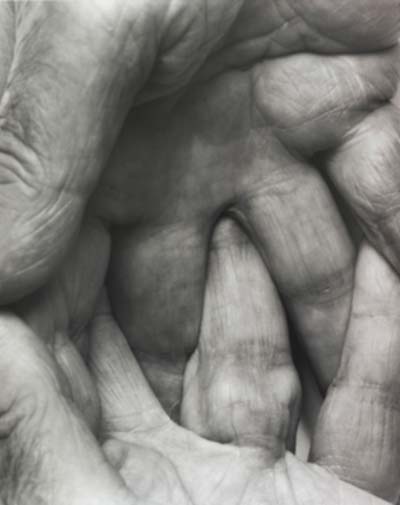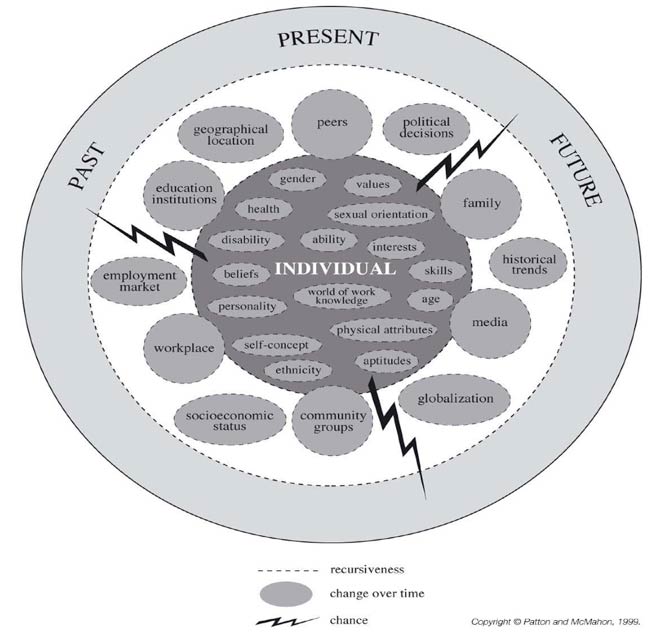economics, technology |
March 22nd, 2011
visual design |
March 21st, 2011

Mashed potatoes, macaroni and cheese, meatloaf…they may be bad for your arteries, but according to an upcoming study, they’re good for your heart and emotions. The study focuses on “comfort food” and how it makes people feel. (…)
In another experiment, eating chicken soup in the lab made people think more about relationships, but only if they considered chicken soup to be a comfort food—a question they’d been asked long before the experiment, along with many other questions, so they wouldn’t remember it.
{ APS | Continue reading }
food, drinks, restaurants, psychology |
March 21st, 2011

Researchers who have spent the last two years studying the security of car computer systems have revealed that they can take control of vehicles wirelessly.
The researchers were able to control everything from the car’s brakes to its door locks to its computerized dashboard displays by accessing the onboard computer through GM’s OnStar and Ford’s Sync, as well as through the Bluetooth connections intended for making hands-free phone calls. They presented their findings this week.
{ Technology Review | Continue reading }
motorpsycho, technology, transportation, uh oh |
March 21st, 2011

An emerging body of research is suggesting that spending time alone, if done right, can be good for us — that certain tasks and thought processes are best carried out without anyone else around, and that even the most socially motivated among us should regularly be taking time to ourselves if we want to have fully developed personalities, and be capable of focus and creative thinking.
There is even research to suggest that blocking off enough alone time is an important component of a well-functioning social life — that if we want to get the most out of the time we spend with people, we should make sure we’re spending enough of it away from them.
{ The Boston Globe | Continue reading }
photo { Helmut Newton }
ideas, psychology |
March 21st, 2011

Humans are asymmetric animals. Early in our embryonic development, the heart turns to the left. The liver develops on the right. The left and right lungs have distinct structure. (…)
When it comes to handedness, another basic human asymmetry, which reflects the structure and function of the brain, the reversed pattern is relatively common, and for all that, not easily understood. (…)
The riddle of what underlies handedness remains. Its proportions — roughly 90 percent of people are right-handed and 10 percent left-handed — stay consistent over time.
Hand dominance (whether left or right) is related to brain asymmetry. And that, Dr. Francks said, “is not at all understood; we’re really at the very beginning of understanding what makes the brain asymmetrical.”
Though brain asymmetries exist in our closest primate relatives, there seems to be general consensus that the human brain is more profoundly asymmetric, and that understanding that asymmetry will show us much about who we are and how our brains work.
{ NY Times | Continue reading }
brain, science |
March 21st, 2011

Even if Japan’s nuclear crisis is contained, its earthquake and tsunami now seem certain to be, economically speaking, among the worst natural disasters in history, with total losses potentially as high as two hundred billion dollars. In response, fearful investors sent the Nikkei down almost twenty per cent on the first day of trading after the tsunami, and it’s still down more than ten per cent. Yet, while the fear is understandable, this may turn out to have been an overreaction: history suggests that, despite the terrifying destruction and the horrific human toll, the long-term impact of the quake on the Japanese economy could be surprisingly small.
{ New Yorker | Continue reading }
asia, economics, incidents |
March 21st, 2011

The first day of spring arrives on varying dates (from March 19-21) in different years for two reasons: Our year is not exactly an even number of days; and Earth’s slightly noncircular orbit, plus the gravitational tug of the other planets, constantly changes our planet’s orientation to the sun from year to year.
This year, spring started Sunday, March 20, at 7:21 p.m. EDT (23:21 UTC). That’s when the so-called vernal equinox occurs.
{ LiveScience | Continue reading }
climate, science |
March 21st, 2011
 Man posing as officer pulls over undercover police vehicle.
Man posing as officer pulls over undercover police vehicle.
Gay couple spent the last 20 years pretending a baby doll named Digby is their son.
Avalanche victims buried in Canada die significantly quicker than those buried in Switzerland.
Man busted for polygamy after unfriending wife No. 1.
Man charged with stabbing four people, killing one, after he became enraged because people were criticizing him for being flatulent, police said.
Philadelphia magazine fired editor Larry Platt for giving a framed photo of his testicle to a female employee.
Vegetarian throws meal at flight attendant.
Coyote Attacks: An Increasing Suburban Problem.
Quentin Tarantino Sues Neighbor Over Pet Birds.
U.S. millionaires say $7 million not enough to be rich.
In the last five years, full-fledged adults have seemingly given up the telephone — land line, mobile, voice mail and all.
Banking on a Paywall at The New York Times. Related: New York Times paywall: wishful thinking or just crazy? And: Here’s what the New York Times paywall looks like (to Canadians).
A study of magicians’ fake movements.
An afternoon nap tunes out negative emotions, tunes in positive ones.
The mathematics of being nice.
Study explains why birds crash into buildings.
New gadget provides fresh insight into goose-bumps.
Stress affects the balance of bacteria in the gut and immune response.
How Network Theory Can Prevent Extinctions.
 Two stars caught fusing into one. Astronomers observe a merger in action for the first time.
Two stars caught fusing into one. Astronomers observe a merger in action for the first time.
Current computer graphics are fairly well known and understood. But how did we get here? The evolution of computer graphics is intertwined with textual display, and it is difficult to consider the two separately.
The Digital Crimes Unit at Microsoft, working with the US authorities, has managed to lay the smack down on the world’s largest spam network, Rustock.
How the iPhone Led to the Sale of T-Mobile USA.
How did a British polytechnic graduate become the design genius behind £200billion Apple?
The King of LSD.
Owsley Stanley died last weekend in a car crash in Australia, where he lived. It was Owsley who gave acid to Jimi Hendrix, Pete Townshend and Brian Jones (among many others) at the legendary Monterey Pop Festival of 1967. It was Owsley who agreed to deliver a lifetime supply of LSD to John Lennon. [NY Times, Rolling Stones]
John Hoke was fired from the federal government in 1962 because he wanted to build a boat powered by the sun.
The evolving design of cemeteries.
Cannibals Seeking Same: A Visit To The Online World Of Flesh-Eaters.
The 44-year-old ex-heavyweight champion is in bed by 8 and often up as early as 2 in the morning, at which point he takes a solitary walk around the gated compound in the Las Vegas suburb where he lives while listening to R&B on his iPod. Tyson then occupies himself with reading (he’s an avid student of history, philosophy and psychology), watching karate movies or taking care of his homing pigeons, who live in a coop in the garage, until 6, when his wife, Lakiha (known as Kiki), gets up.
Fire is a rare species: the professional boxer-model-actress.
What if your wife were a porn star?
Stan Lee on Which Superhero Has the Best Penis.
 Sean Parker, the Napster founder and 31-year-old Facebook billionaire, paid $20 million to buy 40 West 10th Street, one of the best townhouses in Greenwich Village. More: As a teenage computer hacker in the Washington, DC, suburbs a decade and a half ago, Sean Parker had acceptable technology skills but none of the out-and-out wizardry of a Bill Gates or a Steve Jobs.
Sean Parker, the Napster founder and 31-year-old Facebook billionaire, paid $20 million to buy 40 West 10th Street, one of the best townhouses in Greenwich Village. More: As a teenage computer hacker in the Washington, DC, suburbs a decade and a half ago, Sean Parker had acceptable technology skills but none of the out-and-out wizardry of a Bill Gates or a Steve Jobs.
Was Monopoly originally meant to teach people about the evils of capitalism?
Russian Anarcho-Punk zine: PunkWay #5, winter 2011
How Much Radiation Do We Absorb Every Day?
7 Ways Larry Page Is Defining Google’s Future.
World’s Top Scientific Cities.
How Shar-Pei dogs got their wrinkles.
Ambient music and live NYPD police radio.
The JWT Salt Lick BBQ truck at SXSW is so good if you were a cow you would eat yourself. [Thanks Glenn]
Do you use a hand sanitizer?
every day the same again |
March 21st, 2011
books, haha, mathematics |
March 21st, 2011

In late 1979, Debbie Harry suggested that Nile Rodgers join her and Chris Stein at a Hip hop event in a communal space taken over by young kids and teenagers with boom box stereos, who would play various pieces of music to which performers would break dance. The main piece of music they would use was the break section of “Good Times.”
A few weeks later, Blondie, The Clash and Chic were playing a gig in New York at Bonds nightclub. When Chic started playing “Good Times,” rapper Fab Five Freddy and members of the Sugarhill Gang jumped up on stage and started freestyling with the band; Rodgers allowed them to “do their improvisation thing like poets, much like I would play guitar with Prince.”
A few weeks later Rodgers was on the dance floor of New York club LaViticus and suddenly heard the DJ play a song which opened with Edwards bass line from “Good Times”. Rogers approached the DJ who said he was playing a record he had just bought that day in Harlem. The song turned out to be an early version of “Rapper’s Delight” by The Sugarhill Gang, which Rogers noted also included a scratched version of the song’s string section. Rogers and Edwards threatened The Sugarhill Gang with legal action, which resulted in them being credited as co-writers on “Rappers Delight”.
{ Wikipedia | Continue reading }
celebs, flashback, music, new york |
March 21st, 2011
photogs |
March 20th, 2011
Linguistics, science |
March 20th, 2011

In all of negotiation, there is no bigger trap than “fairness.”
This chapter from the Negotiator’s Fieldbook explains why among multiple models of fairness, people tend to believe that the one that applies here is the one that happens to favor them. This often creates a bitter element in negotiation, as each party proceeds from the unexamined assumption that its standpoint is the truly fair one.
For a negotiation to end well, it is imperative for both parties to assess the fairness of their own proposals from multiple points of view, not just their instinctive one – and to consider the fairness of their negotiation procedures as well as of their substantive proposals.
{ Perceptions of Fairness | PDF }
ideas, relationships |
March 18th, 2011

A deterministic universe [is one] in which “Every decision is completely caused by what happened before the decision—given the past, each decision has to happen the way that it does.” After being presented with this description of determinism, one group of participants was asked whether it is possible for anyone to be morally responsible for their actions in such a universe. These participants tended to say that it is not possible to be morally responsible in that universe. That question about moral responsibility is, of course, pitched at an abstract level.
Another group of participants was presented instead with a concrete case of a man who killed his family. That provoked a much different response. People tended to say that the man was fully morally responsible for his actions.
People are pulled in different directions because different mental mechanisms are implicated in different conditions.
{ Science | via Overcoming Bias | Continue reading }
photo { Lauren Edwards }
ideas, psychology |
March 18th, 2011

The Federal Reserve has blessed the balance sheet of Goldman Sachs — paving the way for the investment bank to pay back the $5 billion investment that Warren Buffett made at the height of the financial crisis in 2008. (…)
In the darkest days of the financial crisis, Mr. Buffett agreed to invest $5 billion in Goldman Sachs, whose stock was suffering amid a general liquidity scare. The deal in September 2008 came at a hefty price, namely a 10 percent annual dividend that amounted to about $500 million.
At the time, Mr. Buffett also picked up warrants, giving Berkshire the right to buy $5 billion of stock with a strike price of $115. With Goldman stock currently trading at $160, Buffett’s profit on the warrants is around $2 billion.
{ NY Times | Continue reading }
For the first time, researchers prompted the very rich—people with fortunes in excess of $25 million—to speak candidly about their lives. The result is a suprising litany of anxieties: their sense of isolation, their worries about work and love, and most of all, their fears for their children.
{ The Atlantic | Continue reading }
photo { John Coplans }
U.S., economics |
March 18th, 2011
photogs |
March 18th, 2011

Over the last few decades many Buddhists and quite a few neuroscientists have examined Buddhism and neuroscience, with both groups reporting overlap. (…)
Neuroscience tells us the thing we take as our unified mind is an illusion, that our mind is not unified and can barely be said to “exist” at all. Our feeling of unity and control is a post-hoc confabulation and is easily fractured into separate parts. As revealed by scientific inquiry, what we call a mind (or a self, or a soul) is actually something that changes so much and is so uncertain that our pre-scientific language struggles to find meaning.
Buddhists say pretty much the same thing. They believe in an impermanent and illusory self made of shifting parts. They’ve even come up with language to address the problem between perception and belief. Their word for self is anatta, which is usually translated as ‘non self.’ One might try to refer to the self, but the word cleverly reminds one’s self that there is no such thing.
{ Seed | Continue reading }
photo { Edward Weston }
ideas, neurosciences |
March 18th, 2011


























